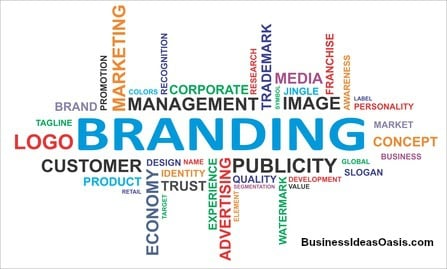Four Steps to Choose a Winning Name for Your Brand

 Every business undergoes a naming process at some point. Most commonly, business names are created at inception, but companies also embark on a naming process when introducing sub-brands, and sometimes when an old name needs an update to remain relevant to buyers.
Every business undergoes a naming process at some point. Most commonly, business names are created at inception, but companies also embark on a naming process when introducing sub-brands, and sometimes when an old name needs an update to remain relevant to buyers.
Unfortunately, only a small number of B2B owners are aware of the steps they need to take to come up with an effective, memorable name. In fact, there are only four steps, but they involve time, work and money. Skipping a step may lead to a name that generates less business, and could put the company at risk of a trademark infringement lawsuit.
1. Get started with customer insight
When naming, most people grab a pen and paper, jot down ideas, and quickly find one to which they are partial. However, before the fun of brainstorming begins, research and strategy should be completed.
There is incredible insight to be gained from hearing your customers’ opinions. It’s important to hear why customers choose you, and how they perceive your business. Some great taglines have even been born out of customer quotes! Ideally, have a third party conduct the customer interviews. This makes people more likely to speak freely, and keeps internal biases from clouding valuable insight.
2. Revisit your strategy
Next, review your brand essence (your company’s personality traits, position in the marketplace and promise to customers) to ensure the names you brainstorm complement your strategy. There are many possible names out there, but only a handful will align with your brand strategy.
3. Follow best practices when brainstorming
Once the preparatory work is done, it is finally time to conjure up names. In doing so, keep these best practices in mind:
- Avoid acronyms because they are difficult for people to remember.
- Use a word, or words, with three syllables or fewer because people tend to shorten words longer than this (think Coca-Cola and British Petroleum).
- Check that the word doesn’t have an unfortunate translation in languages commonly spoken in your marketplace (French in Canada, Spanish in the USA). This mistake has been made my many companies. In the 1960s, ESSO introduced a chain of gas stations named Enco, short for Energy Company, only to discover that in Japanese ‘enco’ means ‘stalled car’. Enco was replaced with the Exxon brand in the early 70s.
- Choose a word found in the dictionary because trying to get people to remember an invented word like Exxon or Z10 (BlackBerry’s new smartphone) is enormously expensive.
- If you are crafting a tagline, it should make clear what you do, and how you do it differently from competitors.
4. Avoid a lawsuit
At this point, it’s tempting to take the name to a graphic designer to get a logo designed, but the next step is seeking legal help to confirm your name doesn’t infringe on another company’s trademark (if it does and you begin using it you are susceptible to a cease-and-assist, or worse, a lawsuit).
This step will likely put the project on pause for one week. The least-involved legal check is called a knockout search and can be done in a couple days. Beyond this, you can have a full search done, and if your lawyer lets you know you can proceed, you have the choice of registering a trademark. A tagline, if you are devising one, is usually considered a separate item to check, but should also undergo an infringement search.
While the short-term cost of trademark checking and registration is a deterrent, it is marginal when weighed against the cost of creating a website and business materials, and losing all the brand equity you build over time. Moreover, registering your trademark protects against another company compromising your brand.
It takes an incredible amount of work to raise awareness and loyalty in the marketplace. Why risk losing all of this by having to start from scratch? Every business, no matter how small, should invest in a winning business name.
Looking for more marketing tips to help your B2B company? Get proven tips in PROFITGUIDE’s Special Report on The Radical Sales Shift.
.png?width=2361&height=488&name=Mezzanine%20Logo_Horiz_RGB_on%20blue%20(1).png)

